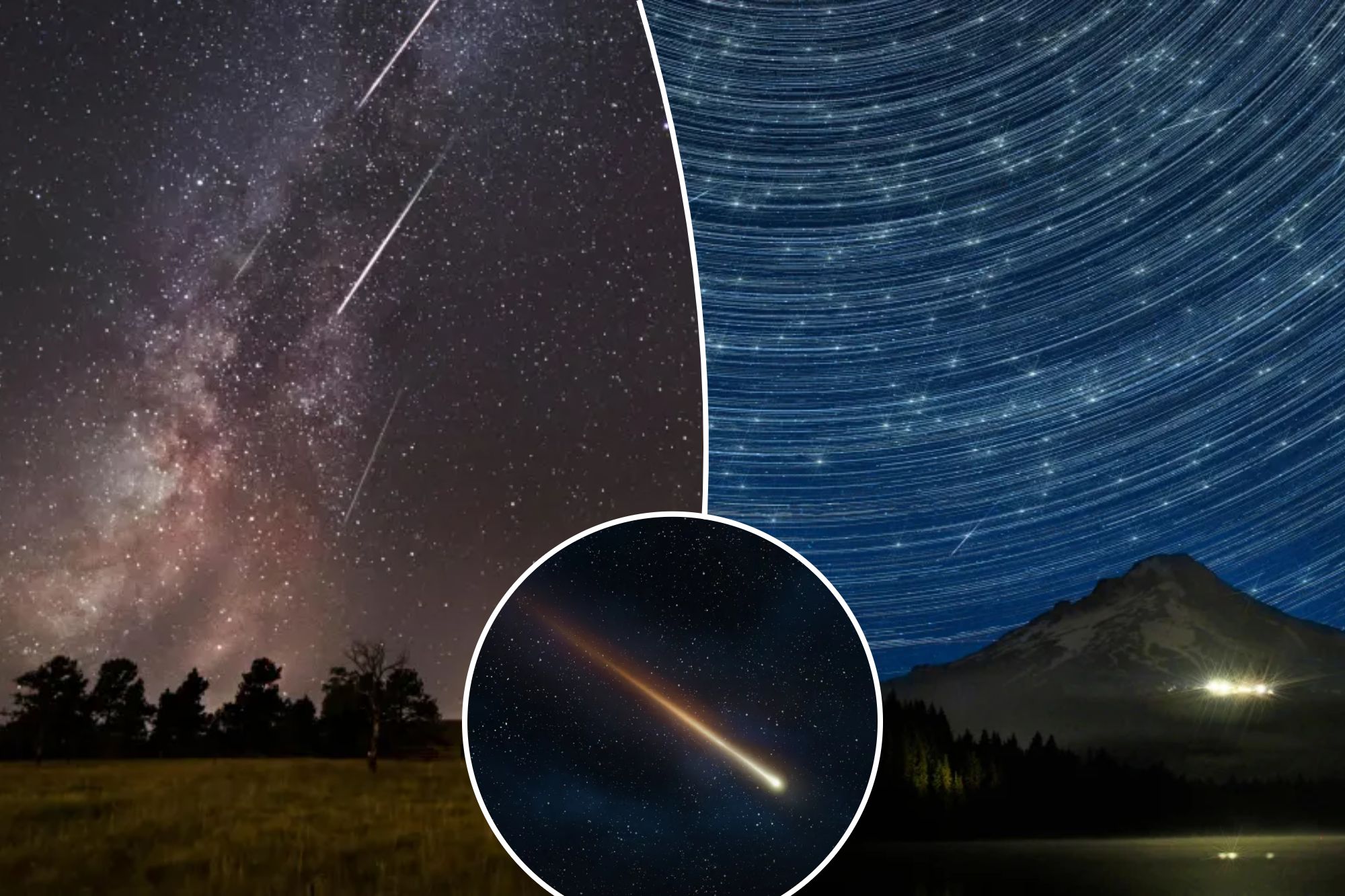
Find the darkness and gather your wishes, my babies – the annual Perseid meteor shower is upon us.
Among the most beautiful sky displays in our solar system, the Perseids will be visible across the US and much of the Northern Hemisphere in the coming days.
Here is everything you need to know.
How long does the Perseid meteor shower last?
The Perseid meteor shower is visible from mid-July to late August, with the peak of the streak occurring between August 9 and 14.
When does the 2024 Perseid meteor shower peak?
The Perseid meteor shower is expected to peak on the evening of August 11, continuing until just before dawn on August 12, with excellent viewing opportunities for several days before and after this peak.
In North America, viewing can start as early as 10pm and last until the pre-dawn hours.
Come the night of the 11th, the moon will be in its waxing crescent phase, roughly 50% illuminated, providing light until it sets around midnight. After midnight moonset, the skies will darken, providing an ideal canvas for meteor viewing.
The best time to observe the Perseids is between 2 and 4 in the morning.
The hotshots at NASA have previously stated that fireballs, or large, bright meteors, are the Perseids’ cosmic calling card.
What is a meteor?
Meteors are born from comet particles and asteroid debris. When this glorious remnant travels around the sun, it leaves a trail behind.
When the Earth passes through these paths, bits of space dust collide with our atmosphere and burn themselves up, and their breakup creates streams of color and fire in the sky.
The Perseid meteor shower comes from comet formerly known as Swift-Tuttle, officially named 109P/Swift-Tuttle. Every year, our planet crosses the comet’s orbital path and moves through a debris trail, with bits and pieces of the comet crashing spectacularly into Earth’s upper atmosphere.
Where can the Perseid meteor shower be seen?
Because of Swift-Tuttle’s orbital path, the Perseid meteor shower is most visible at northern latitudes. While the beam in Perseus never rises above the horizon at southern latitudes, sky watchers in the southern hemisphere see significantly fewer meteors than their northern counterparts.
Perseid mythology
The Perseid meteor shower is named for Perseus, the Greek hero who killed the gorgon.
The showers are associated with Perseus because the radiator, or point from which the Perseids appear to come in the sky, is located in the direction of the constellation Perseus. The celestial display is thought to commemorate the gilded conception of Perseus, where the Lord God Zeus conceived. his mother Danae through a shower of gold. Strange.
The Perseids are also known, biblically and poetically, as “the tears of Saint Lawrence” as they peak near the date of the saint’s martyrdom on August 10.
Fun fact, St. Lawrence is the patron saint of chefs, possibly because of the time he was supposedly roasted alive on a grill. On the heaviest metal mic of all time, he is said to have told his tormentors at one point: “I’m cooked on that side; bring me back and eat.”
Where to watch the Perseid meteor shower
The Perseids are best seen under clear skies and away from the maddening noise of crowds and the ugly intrusion of light pollution.
And while many a noob will reach for a telescope or binoculars, it’s actually better to take in the whole sky, rather than a small part.
Meteors can and will appear anywhere up there, but your best bet is to look in the darkest part of the sky your location offers. For best results, lie on your back with your feet facing south. After about 30 minutes, your eyes will adjust to the dark.
Avoid looking at your phone during the meteor shower. It will impair your night vision and disrupt your ancient connection to the above and beyond.
Look up, wish well and feel the gravity of being cosmic and creaturely, infinitesimal and infinite.
Astrologer Reda Wigle researches and reports irreverently on planetary configurations and their effect on each zodiac sign. Her horoscopes integrate history, poetry, pop culture and personal experience.
#Big #fireballs #Perseid #meteor #shower #watch
Image Source : nypost.com